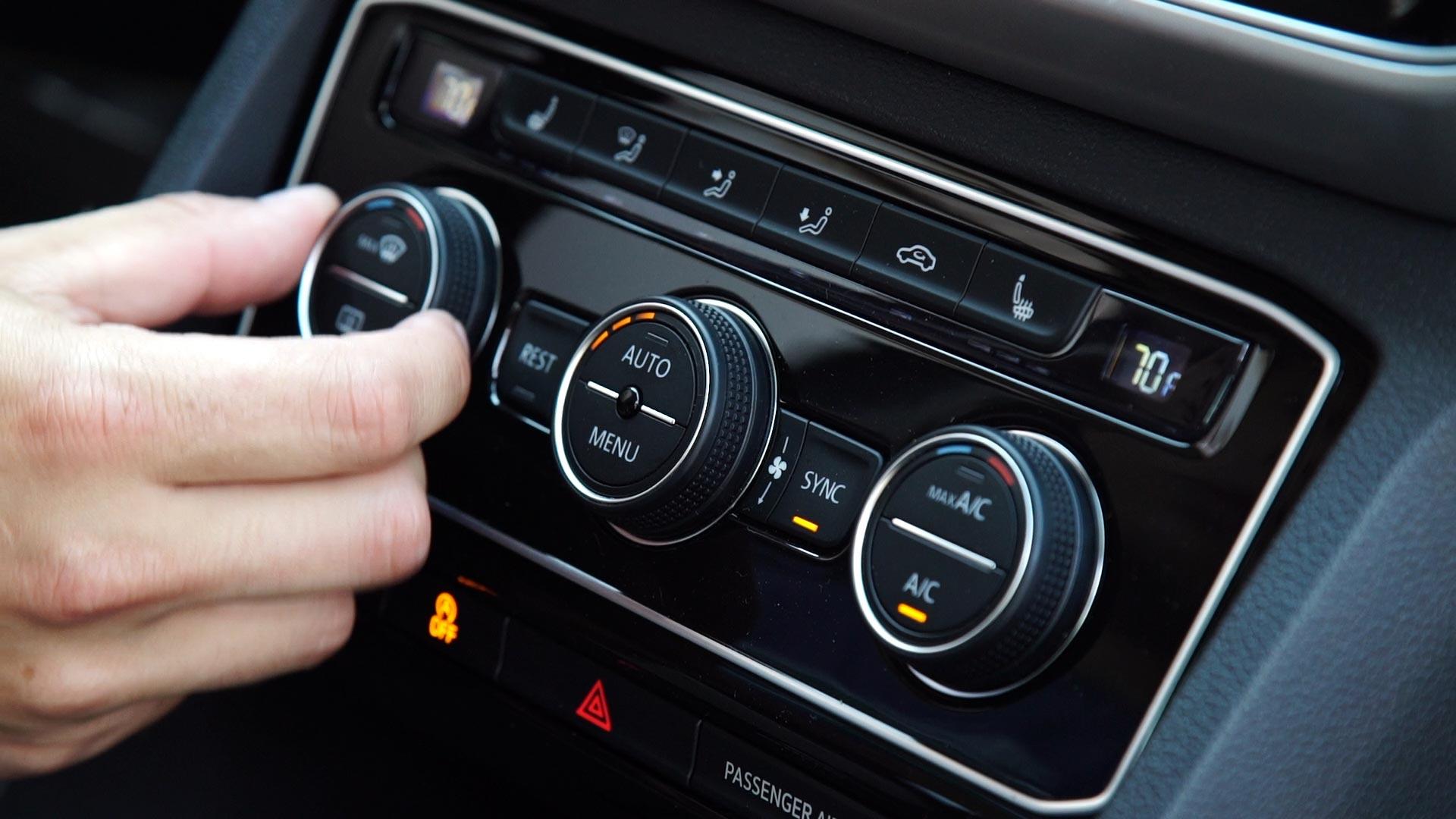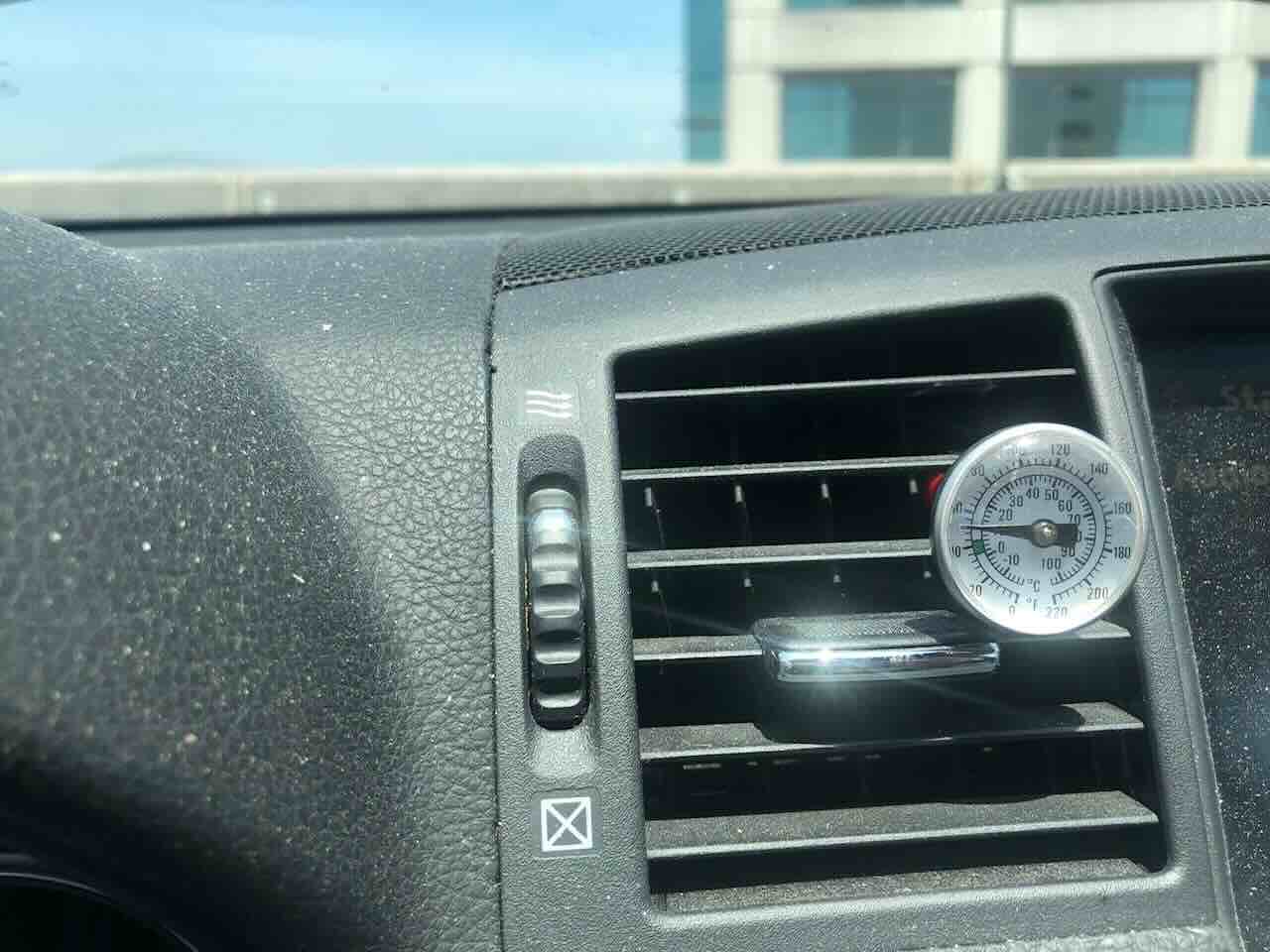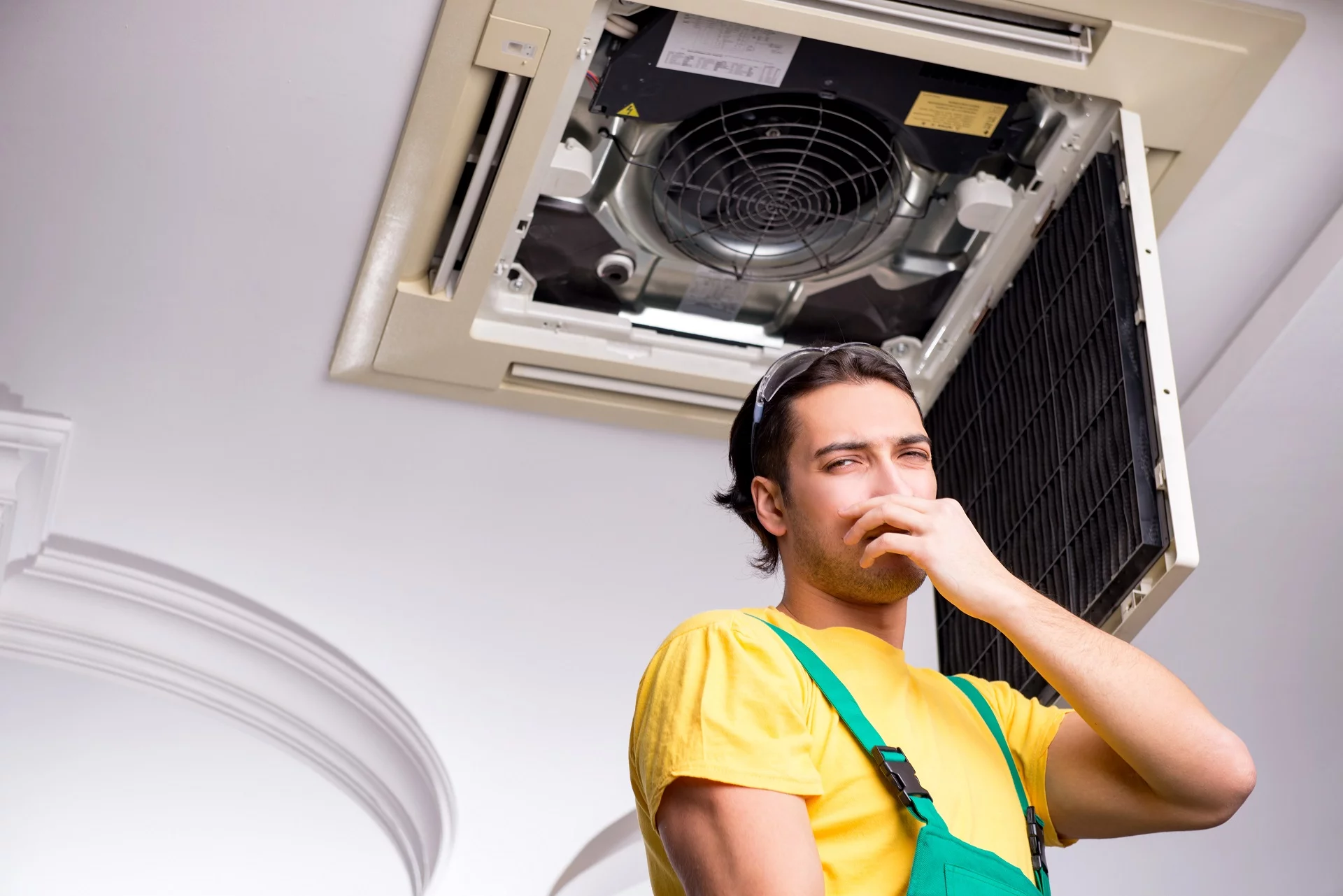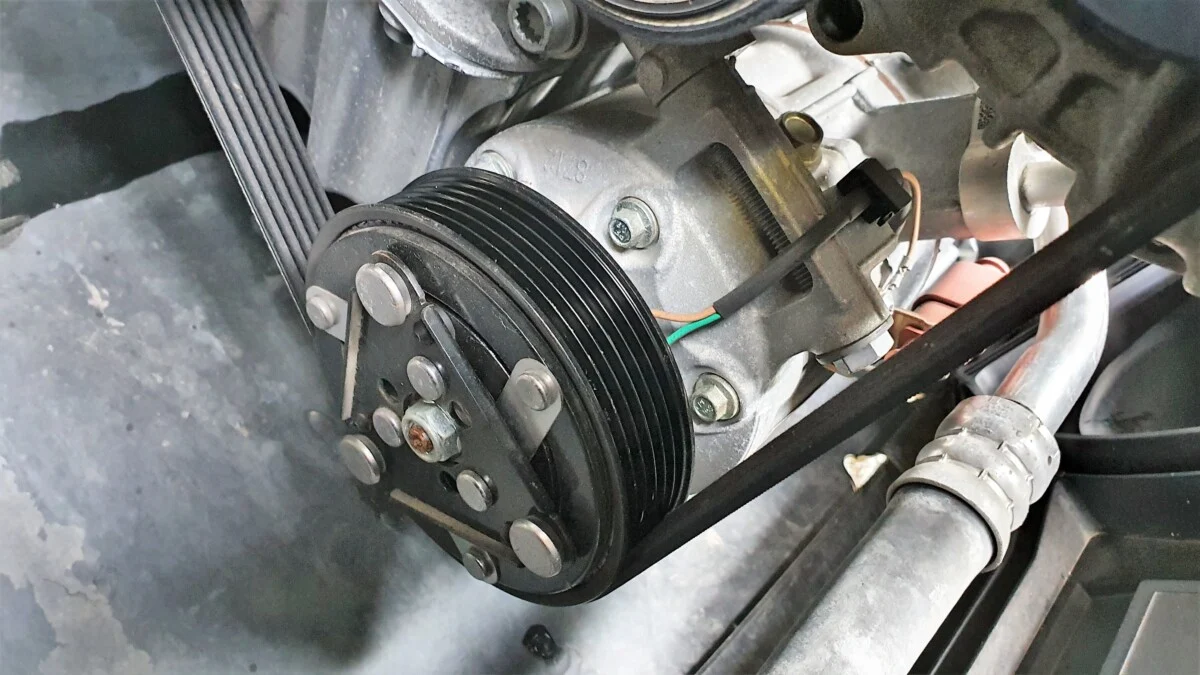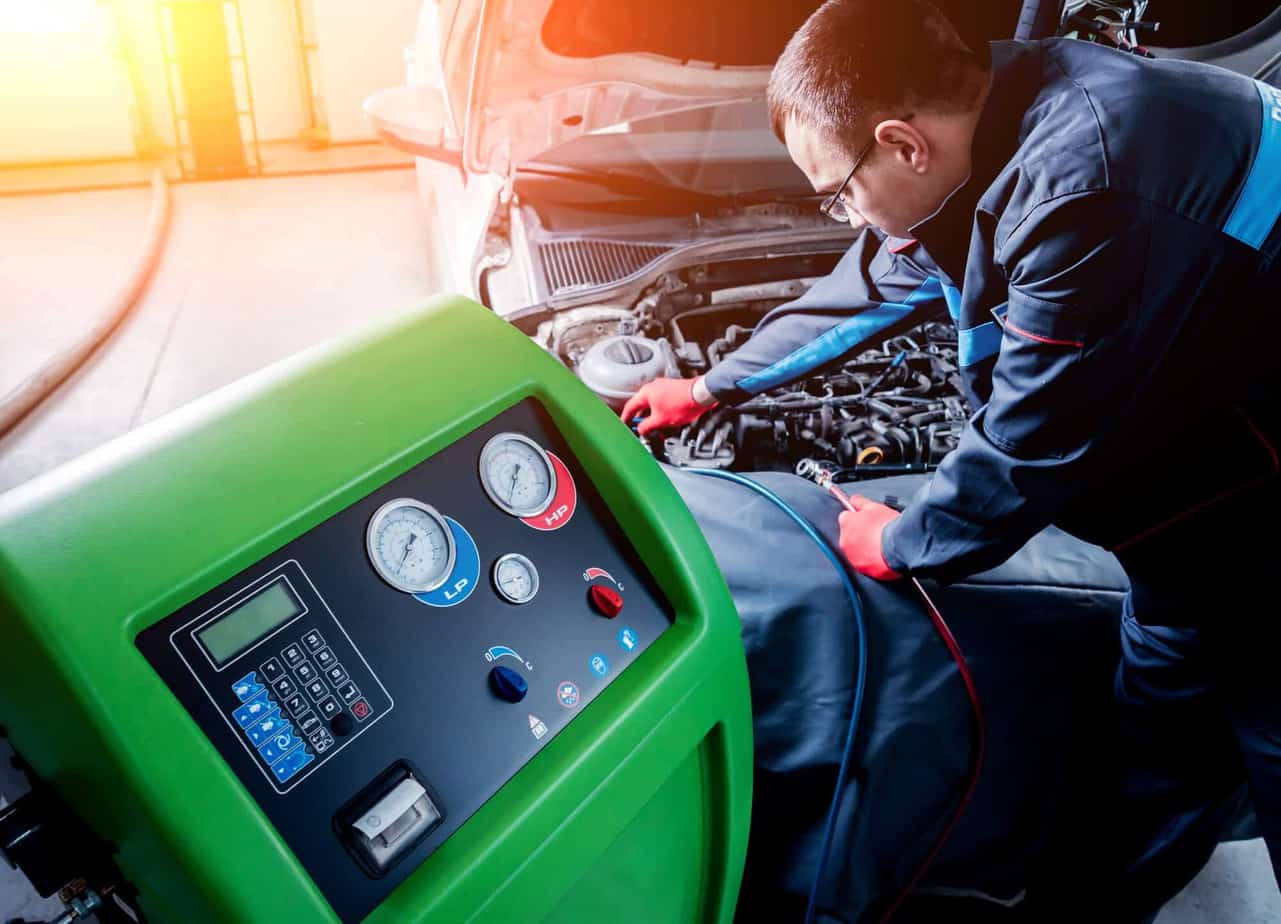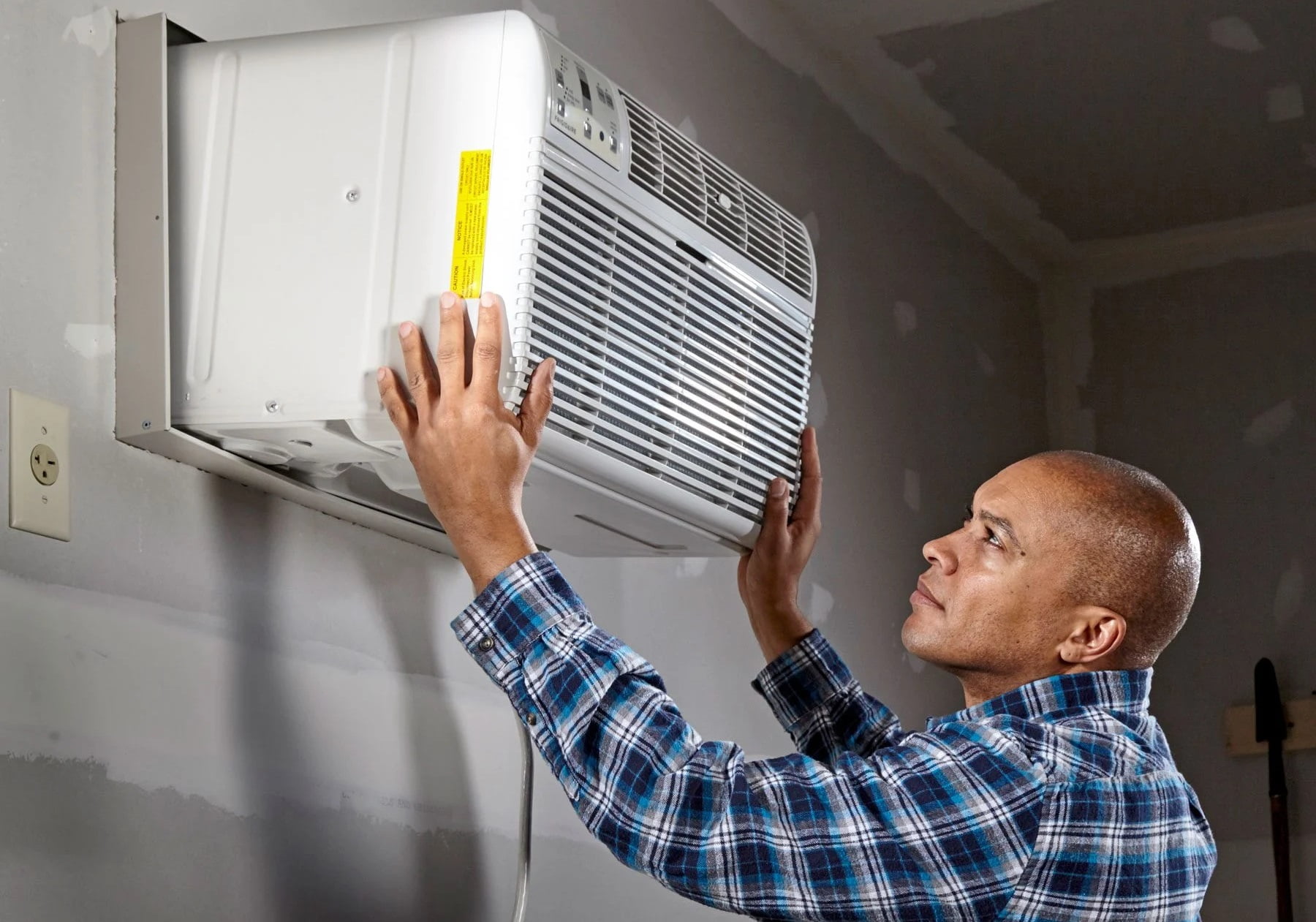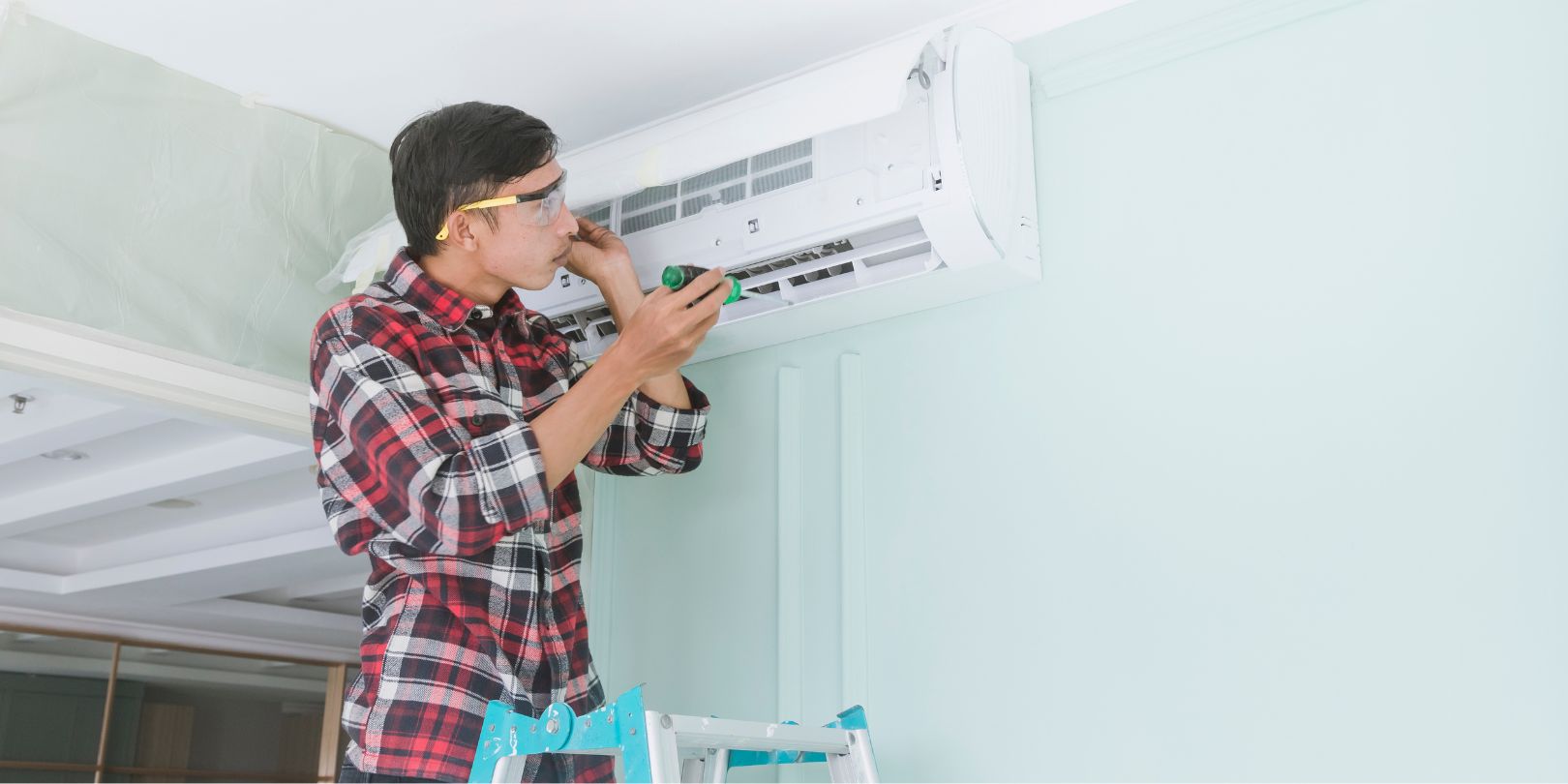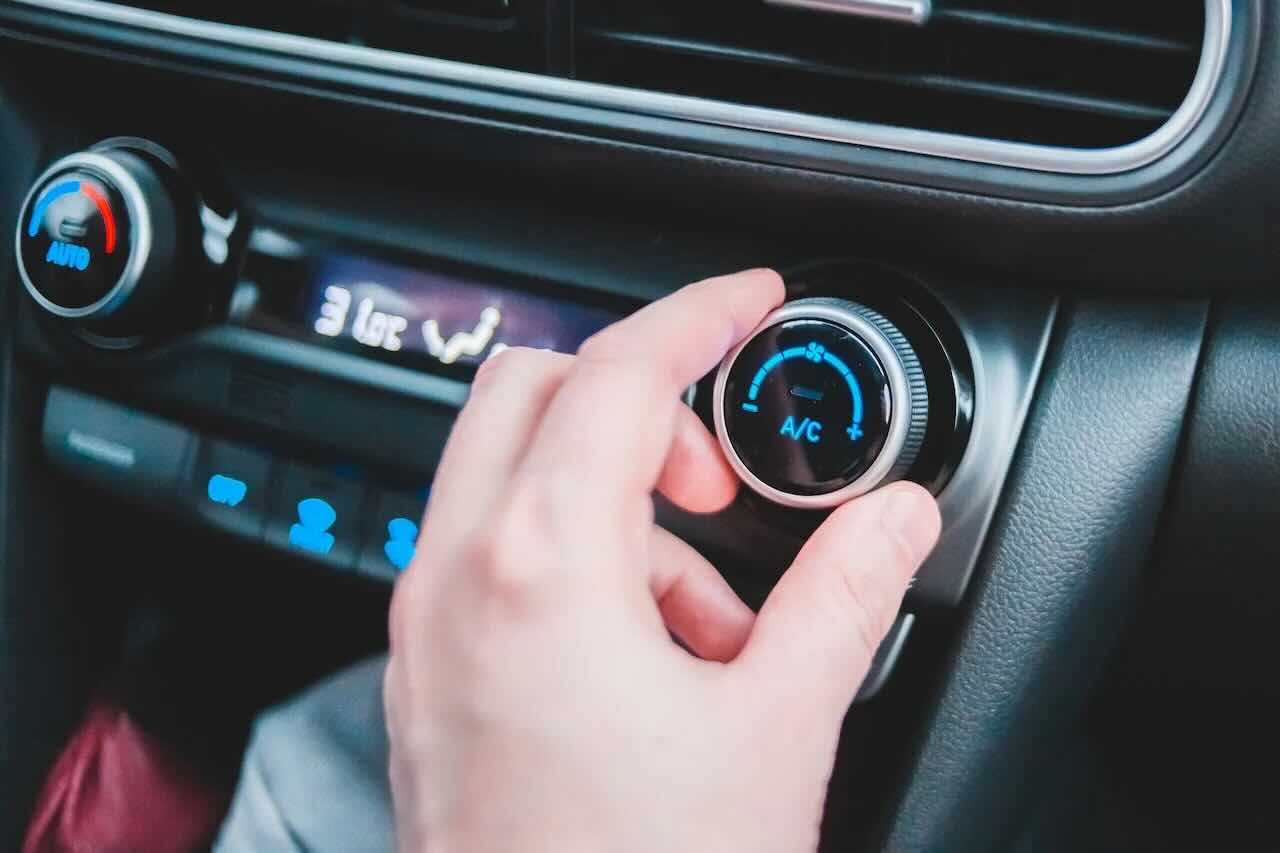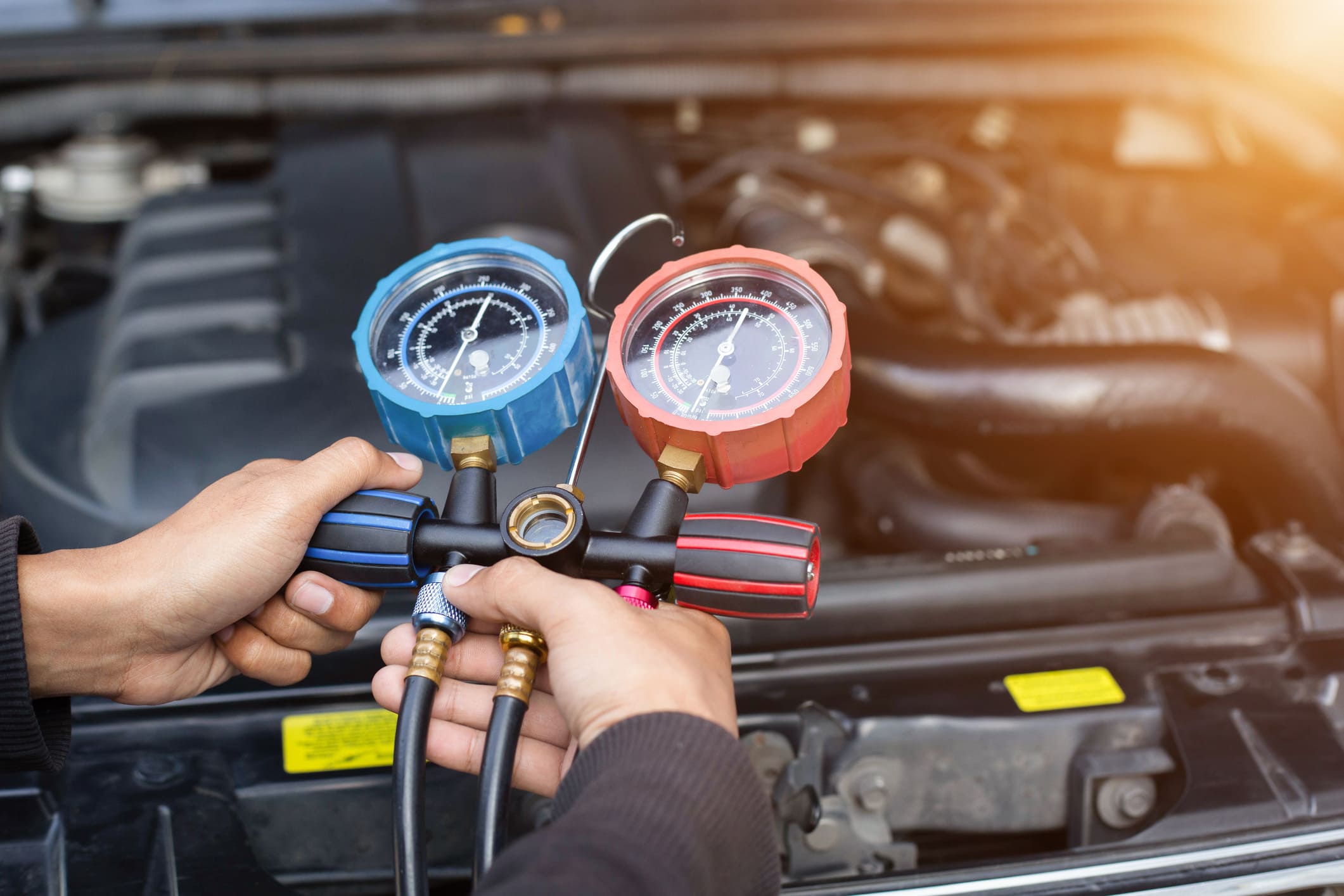Home>Home Maintenance>Car Sputters When Air Conditioner Is On


Home Maintenance
Car Sputters When Air Conditioner Is On
Modified: March 7, 2024
Avoid car sputtering with proper home maintenance. Discover how to prevent issues when your air conditioner is on and keep your vehicle running smoothly.
(Many of the links in this article redirect to a specific reviewed product. Your purchase of these products through affiliate links helps to generate commission for Storables.com, at no extra cost. Learn more)
Introduction
When the air conditioner in your car is running and you notice the engine starts to sputter, it can be a frustrating and worrying experience. Not only does it affect the comfort of your drive, but it may also indicate a potential problem with your vehicle. Understanding the common causes of a car sputtering when the air conditioner is on can help you diagnose and address the issue promptly, ensuring your car runs smoothly and efficiently.
There are several reasons why your car engine may sputter when the air conditioner is turned on. Some of these causes may be minor and easily fixable, while others may require professional assistance. In this article, we will explore the common culprits behind this issue and provide solutions to help you troubleshoot and resolve the problem.
Key Takeaways:
- Keep your car running smoothly by checking and maintaining the refrigerant level, compressor, air filters, and electrical system to prevent sputtering when the air conditioner is on.
- Regularly inspect and clean fuel injectors, ignition system, idle control valve, and battery to ensure a comfortable and uninterrupted driving experience, even with the air conditioner running.
Read more: Car Squeaks When Air Conditioner Is On
Common Causes of Car Sputtering with the Air Conditioner On
When your car engine sputters while the air conditioner is running, there are several potential causes that need to be considered. It’s important to identify the specific culprit to prevent further damage and resolve the issue. Here are the common causes of car sputtering with the air conditioner on:
- Low Refrigerant Level: One of the primary causes of sputtering is a low refrigerant level in the A/C system. When the refrigerant level drops, it puts strain on the compressor, leading to engine sputtering.
- Faulty Compressor: The compressor is responsible for pressurizing the refrigerant, and if it is faulty, it may not function properly when the air conditioner is running. This can result in engine sputtering and decreased A/C performance.
- Dirty Air Filters: Clogged or dirty air filters restrict the airflow to the engine, affecting its performance and causing sputtering. When the air conditioner is turned on, it further strains the engine and exacerbates the issue.
- Electrical Issues: Problems with the electrical system, such as faulty wiring or a malfunctioning sensor, can disrupt the engine’s performance. When the air conditioner is engaged, it adds an additional electrical load, intensifying the issue and leading to sputtering.
- Clogged Fuel Injector: A clogged fuel injector can disrupt the fuel supply to the engine, resulting in an irregular combustion process and sputtering. When the air conditioner is on, it may aggravate the issue due to the increased engine load.
- Failing Ignition System: If components of the ignition system, such as spark plugs or ignition coils, are worn out or malfunctioning, the engine may misfire and sputter. The added load from the air conditioner can make the problem more noticeable.
- Malfunctioning Idle Control Valve: The idle control valve regulates the engine’s idle speed. If it malfunctions or becomes dirty, it can cause the engine to sputter, especially when additional loads, like the air conditioner, are applied.
- Weak Battery: A weak or dying battery may struggle to supply enough power to the engine when the air conditioner is running, leading to sputtering. This can indicate a need for a battery replacement or other electrical system repairs.
These are the main causes of car sputtering when the air conditioner is turned on. Identifying the specific cause can help you determine the necessary steps to resolve the issue and restore your car’s performance. In the following section, we will discuss how to diagnose and fix the problem associated with each of these causes.
Low Refrigerant Level
A low refrigerant level in the air conditioning system is a common cause of car sputtering when the air conditioner is turned on. The refrigerant is responsible for absorbing heat from the air, creating the cool air that is circulated throughout the car’s cabin. When the refrigerant level drops, it puts strain on the compressor, leading to engine sputtering.
To diagnose low refrigerant levels, you can visually inspect the A/C system for any signs of leaks. Look for oily residue or refrigerant stains around fittings and connections. If you suspect a leak, it’s best to consult a professional mechanic who can safely and effectively locate and repair the leak.
To resolve the low refrigerant level issue, you will need to recharge the system with refrigerant. This can be done by a professional technician who will measure the current refrigerant level, evacuate any remaining refrigerant, and then recharge the system with the appropriate amount of refrigerant.
Remember, adding refrigerant without addressing the underlying leak will only provide a temporary solution. Ensuring that the A/C system is leak-free is crucial for long-term performance. A professional mechanic can also perform a pressure test to identify any leaks and repair them accordingly.
Regularly maintaining your car’s air conditioning system, including checking and replenishing refrigerant levels, can help prevent engine sputtering and ensure optimal A/C performance. It’s recommended to have your A/C system inspected and serviced by a qualified technician at least once a year to detect and address any potential issues.
By addressing the low refrigerant level promptly, you can alleviate engine sputtering and enjoy a cool and comfortable drive, even with the air conditioner running at full blast.
Faulty Compressor
A faulty compressor is another common culprit behind car sputtering when the air conditioner is turned on. The compressor is responsible for pressurizing and circulating the refrigerant throughout the A/C system. When the compressor is not functioning properly, it can lead to engine sputtering and reduced A/C performance.
To diagnose a faulty compressor, listen for any unusual noises coming from the A/C system when the air conditioner is engaged. Grinding or clunking sounds can indicate a problem with the compressor. Additionally, if the air conditioner is blowing warm air or not cooling as effectively as it used to, it may be a sign of compressor failure.
Resolving a faulty compressor requires professional assistance, as it may involve advanced diagnostic tools and specialized knowledge. A qualified mechanic will inspect the compressor for any visible damage or leaks and perform tests to determine its functionality.
If a faulty compressor is confirmed, it will need to be replaced. The replacement process involves evacuating the refrigerant from the system, removing the old compressor, installing a new one, and then recharging the system with the appropriate refrigerant amount.
It’s important to note that compressor replacement can be a complex and expensive procedure. Regular maintenance and timely repairs of other A/C components, such as the condenser and refrigerant lines, can help prevent compressor failure and prolong its lifespan.
By addressing a faulty compressor promptly, you can restore the proper functioning of your A/C system, eliminate engine sputtering, and enjoy a comfortable and cool driving experience.
Dirty Air Filters
One of the common causes of car sputtering when the air conditioner is turned on is dirty air filters. The air filters in your car’s engine play a crucial role in filtering out dirt, debris, and contaminants from the incoming air. When these filters get clogged with dirt and dust particles, they restrict the airflow to the engine, affecting its performance and causing sputtering.
To diagnose dirty air filters, visually inspect them for dirt and debris accumulation. If they appear dirty or clogged, it’s time for a replacement. Additionally, a decrease in engine performance or a drop in fuel efficiency can be indicators of dirty air filters.
Resolving the issue is relatively simple and can be done by replacing the dirty air filters. Consult your vehicle’s manual or seek professional guidance to locate and access the air filter housing. Remove the old air filters and replace them with new ones that are compatible with your vehicle’s make and model.
Regularly changing your car’s air filters is crucial for maintaining optimal engine performance. It is recommended to replace the air filters every 12,000 to 15,000 miles or as per the manufacturer’s recommendations. However, if you frequently drive in dusty or polluted environments, more frequent replacements may be necessary.
By ensuring clean air filters, you allow sufficient airflow to the engine, promoting proper combustion and reducing the chances of engine sputtering, especially when the air conditioner is on. This simple maintenance step can benefit both your engine’s performance and the overall longevity of your vehicle.
Read more: How To Fix A Car Air Conditioner
Electrical Issues
Electrical issues can also contribute to car sputtering when the air conditioner is turned on. The electrical system in your vehicle is responsible for powering various components, including the ignition system and the air conditioning system. Problems with wiring, sensors, or other electrical components can disrupt the engine’s performance, leading to sputtering.
Diagnosing electrical issues can be challenging and may require the expertise of a professional mechanic. However, there are a few signs that can indicate an electrical problem. If you notice intermittent sputtering when the air conditioner is engaged, or if you experience problems with other electrical systems in your car, such as the lights or radio, it may suggest an underlying electrical issue.
To resolve electrical problems, a thorough inspection of the electrical system is necessary. This involves checking for loose or damaged wiring, testing various sensors and switches, and using diagnostic tools to identify any error codes.
Repairing electrical issues often requires specialized knowledge and equipment. It is recommended to consult with a qualified professional technician who can accurately diagnose the problem and perform the necessary repairs or replacements.
Prevention is key when it comes to electrical issues. Regularly checking your car’s battery and ensuring all connections are secure can help prevent power disruptions. Additionally, maintaining a clean and well-maintained electrical system, including regular inspections and addressing any signs of trouble, can minimize the risk of electrical problems.
By addressing electrical issues promptly, you can address the root cause of engine sputtering and ensure the smooth operation of your air conditioning system, providing a comfortable and uninterrupted driving experience.
Clogged Fuel Injector
A clogged fuel injector is another potential cause of car sputtering when the air conditioner is turned on. The fuel injector is responsible for delivering fuel into the engine’s combustion chambers in a precise and controlled manner. When the fuel injector becomes clogged or dirty, it can disrupt the fuel supply to the engine, resulting in an irregular combustion process and sputtering.
To diagnose a clogged fuel injector, you may notice a variety of symptoms, including engine hesitation, decreased fuel efficiency, and rough idling. Additionally, the sputtering may become more noticeable when the air conditioner is on, as it puts an additional load on the engine.
Resolving a clogged fuel injector requires cleaning or, in severe cases, replacement. A professional mechanic can perform a fuel injector cleaning procedure using specialized cleaners or ultrasonic cleaning methods to remove the accumulated deposits and restore proper fuel flow.
Prevention is key to avoiding clogged fuel injectors. Using high-quality fuel and periodically adding a fuel system cleaner to your car’s tank can help keep the fuel injectors clean and prevent debris buildup. Additionally, regular maintenance, such as replacing the fuel filter at the recommended intervals, can also contribute to the prevention of clogged fuel injectors.
By addressing a clogged fuel injector promptly, you not only resolve engine sputtering but also improve fuel efficiency and maintain the overall performance of your vehicle. A well-maintained fuel system ensures a smoother and more enjoyable driving experience, even when the air conditioner is running.
Failing Ignition System
A failing ignition system can be a significant contributor to car sputtering when the air conditioner is turned on. The ignition system is responsible for igniting the air-fuel mixture in the engine’s combustion chambers, providing the necessary power for the vehicle to operate smoothly. When components of the ignition system, such as spark plugs or ignition coils, are worn out or malfunctioning, it can result in engine misfires and sputtering.
Diagnosing issues with the ignition system may involve checking for signs of damage or wear on spark plugs, inspecting ignition coils, and conducting voltage tests. Symptoms of a failing ignition system may include rough idling, decreased engine performance, and difficulty starting the vehicle.
Resolving ignition system problems typically requires replacing worn-out spark plugs, faulty ignition coils, or other related components. It is recommended to consult with a professional mechanic to accurately diagnose the issue and perform the necessary repairs.
Regular maintenance of the ignition system is essential for preventing issues and ensuring optimal engine performance. Replacing spark plugs at the manufacturer-recommended intervals, as well as regularly inspecting and servicing the ignition coils, can help prevent sputtering and maintain the efficiency of the air conditioning system.
By addressing a failing ignition system promptly, you can eliminate engine sputtering, improve fuel efficiency, and enhance the overall performance of your vehicle. A well-maintained ignition system is key to a smooth and reliable driving experience, even when the air conditioner is running.
Malfunctioning Idle Control Valve
A malfunctioning idle control valve can contribute to car sputtering when the air conditioner is turned on. The idle control valve, also known as the idle air control valve, regulates the engine’s idle speed by controlling the amount of air entering the engine when the throttle is closed. If the idle control valve becomes dirty or malfunctions, it can disrupt the engine’s idle speed, leading to sputtering.
To diagnose a malfunctioning idle control valve, you may notice erratic idle speed or stalling when the car is at a stop. Additionally, sputtering may become more pronounced when the air conditioner is engaged, as the valve may struggle to maintain the appropriate idle speed under the additional load.
Resolving issues with the idle control valve typically involves cleaning or, in severe cases, replacing the valve. Consult your vehicle’s manual or seek professional guidance to locate and access the idle control valve. Cleaning can be done using specialized throttle body cleaners and brushes to remove any carbon deposits or dirt that may be affecting its functionality.
Prevention is crucial for maintaining the proper operation of the idle control valve. Regularly cleaning and maintaining the throttle body, where the idle control valve is located, can help prevent the buildup of carbon deposits and ensure smooth airflow. It is also important to address any issues with the air intake system promptly to prevent contamination of the valve.
By addressing a malfunctioning idle control valve promptly, you can restore proper idle speed, eliminate engine sputtering, and maintain stable performance even with the air conditioner running. Regular maintenance and cleaning of the idle control valve can contribute to the overall efficiency and reliability of your vehicle.
Read more: How To Clean A Car Air Conditioner
Weak Battery
A weak or dying battery can be a significant factor contributing to car sputtering when the air conditioner is turned on. The battery provides the electrical power required for the vehicle’s electrical systems, including the ignition and air conditioning systems. When the battery is weak, it may struggle to supply enough power to the engine, leading to sputtering.
To diagnose battery issues, you may notice slow cranking when starting the vehicle, dimming lights, or other electrical malfunctions. If you suspect a weak battery, you can have it tested using a battery load tester or seek professional assistance.
Resolving a weak battery issue typically involves recharging or replacing the battery. If the battery is still in good condition, it can be recharged using a battery charger. However, if the battery is old or not holding a charge, it may need to be replaced with a new one.
Proper battery maintenance is essential for preventing issues and ensuring reliable performance. Regularly inspecting the battery for signs of corrosion, keeping the connections clean, and checking the battery’s voltage can help identify potential problems before they lead to engine sputtering.
In addition to battery maintenance, it’s advisable to regularly inspect the alternator, which charges the battery while the engine is running. A faulty alternator can contribute to a weak battery and cause sputtering. Consulting a professional mechanic can help diagnose any alternator issues and perform necessary repairs or replacements.
By addressing a weak battery promptly, you can ensure a stable power supply to the engine, eliminate sputtering, and prevent other electrical issues. Regular battery maintenance and periodic replacements can contribute to the overall reliability and performance of your vehicle, even when the air conditioner is running.
Make sure your car’s air filter is clean and the spark plugs are in good condition. A clogged air filter or worn-out spark plugs can cause sputtering when the AC is on.
How to Diagnose and Fix the Issue
Diagnosing and fixing the issue of car sputtering when the air conditioner is turned on requires a systematic approach. Here are the steps to help you identify and resolve the problem:
- Check the Refrigerant Level: Start by inspecting the refrigerant level in the air conditioning system. If it’s low, have it recharged by a professional technician to alleviate strain on the compressor.
- Inspect the Compressor: Examine the compressor for any signs of damage or leaks. If it’s faulty, it may need to be replaced to ensure proper functioning of the A/C system.
- Clean or Replace Air Filters: Dirty air filters can restrict airflow to the engine, leading to sputtering. Clean or replace the air filters to restore proper airflow and prevent engine issues.
- Test for Electrical Problems: If you suspect electrical problems, consult with a professional mechanic who can perform tests and inspections to identify any wiring issues or sensor malfunctions.
- Clean or Replace Fuel Injector: A clogged fuel injector can disrupt fuel supply and cause sputtering. Clean or replace the fuel injector to ensure proper fuel flow to the engine.
- Examine the Ignition System: Inspect spark plugs, ignition coils, and other ignition system components for signs of wear or malfunction. Replace any faulty parts to prevent misfires and sputtering.
- Inspect the Idle Control Valve: If the idle control valve is dirty or malfunctioning, it can affect idle speed and lead to sputtering. Clean or replace the valve to maintain stable engine performance.
- Check the Battery Health: Test the battery’s voltage and consider recharging or replacing it if it is weak or dying. Proper battery maintenance is essential to prevent power disruptions.
If you are unfamiliar with car maintenance or lack the necessary tools, it’s recommended to consult a professional mechanic. They have the expertise and equipment to accurately diagnose and repair the issue, ensuring your car runs smoothly and efficiently.
Remember that regular maintenance and servicing of your vehicle, including the air conditioning system, can help prevent issues like sputtering. Follow the manufacturer’s recommended maintenance schedule and address any signs of trouble promptly to maintain the optimal performance of your car.
Check the Refrigerant Level
One of the first steps in diagnosing and addressing the issue of car sputtering when the air conditioner is turned on is to check the refrigerant level in the A/C system. Low refrigerant levels can put strain on the compressor, leading to engine sputtering and diminished A/C performance.
To check the refrigerant level, you will need a refrigerant pressure gauge and safety goggles. Start by locating the A/C system’s service ports, which are typically located near the compressor or on the A/C lines. Refer to your vehicle’s manual or consult a professional mechanic if you’re unsure of their location.
Put on your safety goggles to protect your eyes from refrigerant and debris. Attach the refrigerant pressure gauge to the low-pressure service port. Ensure a secure connection to prevent leaks, as refrigerant is harmful to the environment.
With the engine running and the A/C system turned on to the maximum setting, observe the gauge reading. It should fall within the recommended range specified by the vehicle manufacturer. If the reading is below the specified range, it indicates a low refrigerant level.
If you determine that the refrigerant level is low, it’s best to seek the assistance of a professional technician. They have the proper equipment and knowledge to safely evacuate any remaining refrigerant, locate and fix any leaks, and recharge the system with the appropriate amount of refrigerant.
It’s important to note that simply adding refrigerant without addressing the underlying cause of the low level, such as a leak, will only provide a temporary solution. A professional technician can perform a pressure test to identify the source of any leaks and carry out the necessary repairs.
Regularly checking and maintaining the refrigerant level in your car’s A/C system can help prevent engine sputtering and ensure optimal cooling performance. It’s recommended to have your A/C system inspected and serviced by a qualified technician at least once a year to detect and address any potential issues.
Inspect the Compressor
When diagnosing the issue of car sputtering when the air conditioner is turned on, it’s important to inspect the compressor. The compressor is a vital component of the A/C system as it is responsible for pressurizing and circulating the refrigerant to produce cool air. A faulty or damaged compressor can lead to engine sputtering and decreased A/C performance.
Before inspecting the compressor, ensure that the engine is turned off and the A/C system is not running to prevent any accidental injury. Locate the compressor, which is typically located at the front of the engine compartment. It is a round or cylindrical component connected to the A/C lines.
Visually inspect the compressor for any signs of damage, such as leaks, cracks, or unusual wear. Check the A/C lines and fittings connected to the compressor as well. If you notice any oily residue, refrigerant stains, or physical damage, it may indicate a problem with the compressor.
In some cases, a compressor failure may be due to internal mechanical issues that are not easily detected through a visual inspection. If you suspect a compressor problem but cannot identify any visible signs of damage, it’s best to consult a professional technician who can perform more advanced diagnostic tests.
Resolving a faulty or damaged compressor typically requires professional assistance. A qualified technician will have the expertise and tools necessary to safely diagnose the issue and determine whether a repair or replacement is needed.
If a compressor replacement is necessary, it is crucial to also address any underlying causes that may have led to the compressor failure, such as refrigerant leaks or contamination. By addressing these issues, you can ensure the longevity and proper functioning of the new compressor.
Regular maintenance of the A/C system, including checking the compressor, can help prevent compressor failure and subsequent engine sputtering. It is recommended to have your A/C system inspected by a professional technician at least once a year to detect any potential problems early on and avoid costly repairs.
Read more: Faucet Sputters When First Turned On
Clean or Replace Air Filters
Another important step in troubleshooting car sputtering when the air conditioner is turned on is to clean or replace the air filters. The air filters in your car’s engine play a crucial role in filtering out dirt, dust, and other contaminants from the incoming air. When these filters become clogged or dirty, they can restrict the airflow to the engine, leading to decreased performance and sputtering.
To begin, locate the air filter housing, which is typically found in the engine compartment. Consult your vehicle’s manual or seek professional guidance if you’re unsure of its location. Once you’ve located the air filter housing, open it to access the air filter.
Inspect the air filter for dirt, debris, and dust accumulation. If it appears dirty or clogged, it’s time to clean or replace it. Some air filters are disposable and need to be replaced, while others can be cleaned and reused.
If the air filter is washable, carefully remove it and rinse it under running water. You may also use a mild detergent if necessary. Gently shake off any excess water and let it air dry completely before reinstalling it.
If the air filter is not washable or is severely clogged, it is recommended to replace it with a new one. Ensure that you purchase the correct filter that is compatible with your vehicle’s make and model.
Regularly cleaning or replacing your car’s air filters is essential for maintaining optimal engine performance. It allows for proper airflow, improves fuel efficiency, and prevents engine sputtering, especially when the air conditioner is running.
It is recommended to inspect and clean or replace the air filters at least once every 12,000 to 15,000 miles or as per the manufacturer’s recommendations. However, if you frequently drive in dusty or polluted environments, more frequent cleanings or replacements may be necessary.
By ensuring clean and properly functioning air filters, you can prevent engine sputtering, prolong the lifespan of your engine, and enjoy a smooth and efficient driving experience, even with the air conditioner turned on.
Test for Electrical Problems
When experiencing car sputtering when the air conditioner is turned on, it’s important to test for electrical problems that may be causing the issue. Electrical issues can disrupt the engine’s performance and lead to sputtering. Here are steps to help you identify potential electrical problems:
- Inspect Battery Connections: Start by visually inspecting the battery connections. Ensure they are secure, clean, and free from corrosion. Loose or corroded connections can cause power disruptions and affect engine performance.
- Check Battery Voltage: Use a multimeter to measure the battery’s voltage while the engine is off. A healthy battery typically has a voltage reading between 12.4 and 12.7 volts. If the voltage is significantly lower, it may indicate a weak or dying battery that needs to be recharged or replaced.
- Test Alternator Output: Start the engine and use a multimeter to measure the alternator’s output voltage. It should read around 13.5 to 14.5 volts. If the reading is significantly lower or higher, it suggests a problem with the alternator, such as a faulty voltage regulator.
- Check Wiring and Connectors: Inspect the wiring harnesses and connectors related to the ignition system, air conditioner, and other electrical components. Look for any signs of damage, loose connections, or corrosion. Additionally, ensure that all wires are properly connected and insulated.
- Scan for Error Codes: Use an OBD-II scanner to retrieve any error codes stored in the vehicle’s computer system. Error codes can provide valuable clues about electrical issues that may be affecting engine performance and causing sputtering. Take note of any codes and refer to the scanner’s manual or consult a professional mechanic for further interpretation.
- Professional Diagnosis: If you are unable to identify or resolve electrical issues on your own, it is recommended to consult a professional auto technician. They have the expertise and specialized equipment to perform in-depth diagnostics and repair any electrical problems.
Electrical problems can be complex and tricky to diagnose, especially for those without technical knowledge or experience. Therefore, it’s best to seek professional assistance if you are unsure or uncomfortable with conducting electrical tests on your own.
By identifying and addressing electrical problems, you can eliminate sputtering issues, restore engine performance, and ensure the proper functioning of the air conditioning system in your car.
Clean or Replace Fuel Injector
A clogged or malfunctioning fuel injector is a common culprit of car sputtering when the air conditioner is turned on. The fuel injector is responsible for delivering fuel to the engine’s combustion chambers in a precise and controlled manner. When the fuel injector becomes clogged with deposits or dirt, it can disrupt the fuel flow, leading to an irregular combustion process and sputtering.
To determine if the fuel injector is causing the sputtering issue, you may observe symptoms such as rough idling, decreased engine performance, or poor fuel efficiency. Additionally, the sputtering may become more pronounced when the air conditioner is engaged, as it places an additional load on the engine.
Start by locating the fuel injector(s). Depending on your vehicle, they may be visible on the engine or housed inside the fuel rail. Consult your vehicle’s manual or seek professional guidance to locate them if needed.
If the fuel injector is accessible, you can attempt to clean it using a fuel injector cleaner. Purchase a high-quality fuel injector cleaner from an automotive store and follow the instructions on the product. Typically, you will need to add the cleaner to a full tank of gas and drive the vehicle to allow the cleaner to circulate through the fuel system and clean the injectors.
If the fuel injector is severely clogged or cleaning does not resolve the issue, it may need to be replaced. This task is best left to a professional mechanic who can properly diagnose the problem and perform the necessary repair or replacement.
Prevention is key in maintaining fuel injector health. Regularly using a fuel system cleaner can help prevent deposits from forming in the injectors. Additionally, using high-quality fuel and ensuring a clean fuel filter can contribute to the longevity of your fuel injectors.
By addressing a clogged or malfunctioning fuel injector promptly, you can restore proper fuel flow to the engine, eliminate sputtering, and improve overall engine performance. Regular maintenance and periodic cleaning of the fuel injectors can help prevent future issues and ensure the smooth operation of your vehicle’s air conditioning system.
Examine the Ignition System
When experiencing car sputtering when the air conditioner is turned on, it’s essential to examine the ignition system. The ignition system plays a crucial role in igniting the air-fuel mixture in the engine’s combustion chambers, ensuring optimal engine performance. A faulty ignition system, including worn-out spark plugs or malfunctioning ignition coils, can lead to misfires and sputtering.
To begin examining the ignition system, start by locating the spark plugs. Refer to your vehicle’s manual to identify their location, as it may vary depending on the engine’s design. In most cases, the spark plugs will be accessed by removing a plastic cover or individual ignition coil packs.
Carefully inspect the spark plugs for signs of wear, such as eroded electrodes or heavy carbon buildup. If the spark plugs appear dirty or damaged, they may need to be replaced. It’s recommended to replace all spark plugs at the same time, even if only one appears faulty, to ensure consistent performance across all cylinders.
In addition to the spark plugs, examine the ignition coils. Look for any physical damage, cracks, or signs of electrical arcing. Damaged ignition coils can cause irregular sparks and lead to engine misfires and sputtering.
If you notice any issues with the spark plugs or ignition coils, it’s best to replace them. Ensure you use high-quality replacements that are compatible with your vehicle’s make and model. Following the manufacturer’s recommendations for spark plug gap and torque specifications is crucial for optimum performance.
Regular maintenance of the ignition system is vital for preventing issues. It is recommended to periodically inspect and clean the spark plugs, as well as replace them according to the manufacturer’s guidelines. Additionally, checking the ignition coil’s connections and wiring for any signs of damage or corrosion can help maintain ignition system health.
If you’re unsure about examining or replacing the spark plugs or ignition coils, it’s advisable to seek the assistance of a professional mechanic. They have the knowledge and expertise to accurately diagnose ignition system issues and perform the necessary repairs or replacements.
By thoroughly examining the ignition system, you can address any underlying issues, eliminate sputtering, and ensure the smooth operation of your vehicle’s air conditioning system.
Read more: When Was The First Air Conditioner Made
Inspect the Idle Control Valve
When dealing with car sputtering when the air conditioner is turned on, it’s important to inspect the idle control valve. The idle control valve, also known as the idle air control valve, regulates the engine’s idle speed by controlling the amount of air entering the engine when the throttle is closed. If the idle control valve becomes dirty or malfunctions, it can disrupt the engine’s idle speed, leading to sputtering.
To inspect the idle control valve, you will first need to locate it. It is generally found on the throttle body, which is located near the intake manifold. Consult your vehicle’s manual or seek professional guidance if you’re unsure of its exact location.
Once you’ve located the idle control valve, visually inspect it for any signs of dirt, debris, or carbon deposits. These deposits can accumulate over time and affect the valve’s proper functioning.
If the idle control valve appears dirty, you can attempt to clean it. Use a throttle body cleaner, which can be purchased at an automotive store. Follow the instructions on the cleaner, as they can vary between products. Typically, you will need to spray the cleaner onto the idle control valve and use a brush or cloth to remove any deposits. Avoid getting the cleaner on other engine components, as it may cause damage.
If cleaning the idle control valve does not resolve the issue, or if the valve appears to be malfunctioning, it may need to be replaced. It’s recommended to consult a professional mechanic for a thorough diagnosis and replacement if necessary.
Regular maintenance of the idle control valve can help prevent issues. Periodically cleaning the throttle body and idle control valve as part of your routine maintenance can prevent carbon buildup and ensure proper airflow.
In addition, keeping the air intake system clean and free from contaminations, such as dust or oil, can help maintain the optimal performance of the idle control valve.
By inspecting and maintaining the idle control valve, you can eliminate engine sputtering, ensure stable idle speed, and promote a smooth driving experience, even when the air conditioner is running.
Check the Battery Health
When experiencing car sputtering when the air conditioner is turned on, it’s important to check the health of your vehicle’s battery. The battery provides the electrical power required to start the engine and run various electrical components, including the air conditioning system. A weak or dying battery can struggle to supply sufficient power, leading to sputtering.
To check the battery health, start by inspecting the battery’s exterior. Look for any signs of damage, corrosion, or loose connections. Corrosion can hinder the flow of electricity and affect the battery’s performance.
Next, you can use a digital multimeter to measure the battery’s voltage. With the engine turned off, connect the multimeter’s negative lead to the battery’s negative terminal and the positive lead to the positive terminal. A fully charged battery should read around 12.6 to 12.8 volts. If the reading is significantly lower, it indicates a weakened or discharged battery.
If the battery voltage is low, you can try recharging it using a battery charger. Follow the charger’s instructions and connect it to the battery, ensuring proper polarity. Allow the battery to charge fully until the charger indicates it is complete.
If recharging the battery does not resolve the issue, it may be necessary to replace it. Consult your vehicle’s manual or seek professional advice to find the correct battery size and specifications for your car.
Regular battery maintenance is essential for prolonging its life and preventing issues. Keep the battery terminals clean by periodically removing any corrosion using a battery terminal cleaner or a mixture of baking soda and water. Ensure that the connections are secure by tightening any loose bolts or clamps.
In addition to regular maintenance, extreme temperatures can affect battery health. If you live in an area with extremely cold winters or hot summers, consider using a battery cover or insulator to protect it from temperature extremes.
Remember that batteries have a finite lifespan, typically ranging from 3 to 5 years. If your battery is older or showing signs of deterioration, it’s recommended to proactively replace it to avoid unexpected issues.
By regularly checking the battery health and properly maintaining it, you can ensure a reliable power source for your vehicle’s electrical systems. This will help eliminate sputtering issues and ensure the smooth operation of the air conditioning system.
Conclusion
Experiencing car sputtering when the air conditioner is turned on can be frustrating and worrisome. However, by understanding the common causes and implementing the appropriate solutions, you can address the issue and ensure your car runs smoothly and efficiently.
From low refrigerant levels and faulty compressors to dirty air filters, electrical problems, clogged fuel injectors, failing ignition systems, malfunctioning idle control valves, and weak batteries, there are various factors that can contribute to sputtering. Each of these components plays a crucial role in the overall performance of your vehicle’s engine and air conditioning system.
Diagnosing the issue and fixing it requires a systematic approach. By checking the refrigerant level, inspecting the compressor, cleaning or replacing air filters, testing for electrical problems, cleaning or replacing fuel injectors, examining the ignition system, inspecting the idle control valve, and checking the battery health, you can identify the underlying causes of sputtering and take the appropriate actions to resolve the problem.
It’s important to prioritize regular maintenance and address issues promptly to prevent further damage and ensure optimal performance. By following manufacturer guidelines, regularly cleaning or replacing components, and seeking professional assistance when necessary, you can prevent engine sputtering and enjoy a smooth and comfortable driving experience, even when the air conditioner is running at full blast.
Remember that professional mechanics have the expertise and specialized tools to accurately diagnose complex issues and perform the necessary repairs or replacements. While some troubleshooting tasks can be done by car owners, it’s advisable to seek professional help if you are unsure or uncomfortable with certain procedures.
By maintaining the various components of your car’s engine and air conditioning system, you can prolong the lifespan of your vehicle, improve fuel efficiency, and ensure a reliable and enjoyable driving experience for years to come.
Frequently Asked Questions about Car Sputters When Air Conditioner Is On
Was this page helpful?
At Storables.com, we guarantee accurate and reliable information. Our content, validated by Expert Board Contributors, is crafted following stringent Editorial Policies. We're committed to providing you with well-researched, expert-backed insights for all your informational needs.

